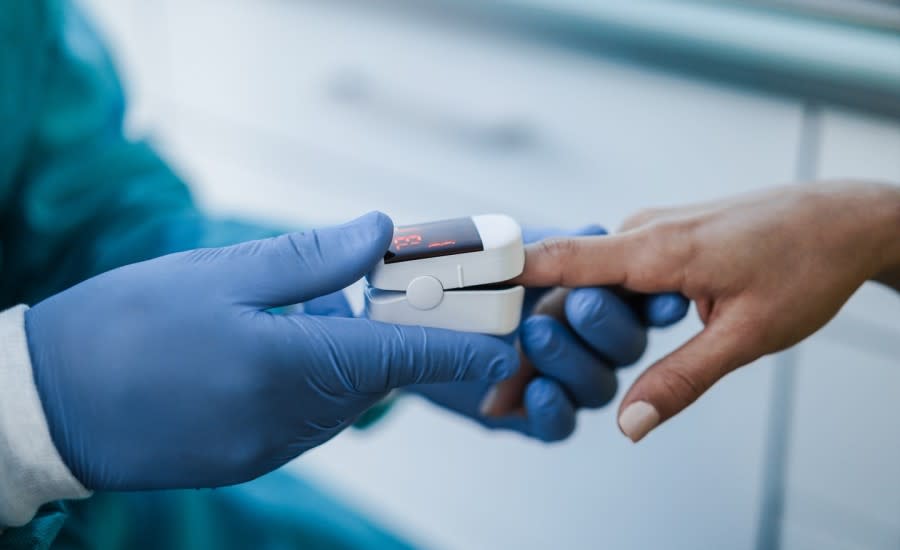FDA convenes meeting on ‘mounting real-world evidence’ pulse oximeters are less accurate for people with darker skin

Story at a glance
FDA panel meets to discuss pulse oximeters, which are medical devices that measure blood oxygen levels.
Studies have suggested that oximeter readings are less accurate for people who have darker skin pigmentation.
The FDA says that more data where skin pigmentation is included as a study parameter are needed.
The Food and Drug Administration (FDA) held a meeting on Tuesday to examine and discuss what an agency panel called “mounting real-world evidence” suggesting that pulse oximeter devices do not provide accurate readings for people with “darker skin pigmentations,” according to the agency’s website.
Inaccurate readings could affect how patients get care in hospitals and may mean that they are not moved into intensive care units when they need it. The agency recommended more studies to understand the issue and suggest that device makers include skin pigmentation as a potential factor affecting accuracy in labeling.
Pulse oximeters work by shining a light source through a fingertip and analyzing the light that passes through. Past studies have shown that pulse oximeters, which are meant to detect low blood oxygen levels, may be inaccurate when used with people who have darker skin. In this meeting, the FDA reviewed published literature, Medical Device Reporting (MDR) data and clinical evidence from studies regarding the accuracy of blood oxygen readings from pulse oximeters in people with darker skin pigmentation.
The panel discussed the concerns about the devices and made recommendations for health care providers, labeling for patients and study design and analyses.
Studies on this topic are often using data in hindsight, meaning that some types of data are not collected or may be inconsistently collected, the panel noted. For example, some patients may self-report their race and ethnicity, but this does not indicate their skin pigmentation. The groups are also not randomized and may not be easily compared.
“Overall, despite these limitations, there appears to be mounting real-world evidence that pulse oximeter accuracy varies by self-reported race, and skin pigmentation,” states the meeting’s executive summary. “However, there is a need for prospective studies that utilize standardized measurement of skin pigmentation, capture simultaneous measurement of SaO2 and SpO2 paired data and systematically collect data on important confounders, to have more robust evidence about the impact of skin pigmentation on real-world pulse oximetry.”
The agency had issued a Safety Recommendation in February 2021 warning that the accuracy of pulse oximeters can be affected by poor circulation, skin pigmentation, skin thickness, skin temperature and tobacco use. The FDA also points out in this panel that only about 18 percent of pulse oximeter devices list on their label that dark pigmentation is a factor that may affect accuracy. Other factors included on device labels are intravascular dyes, excessive light in the environment, presence of electromagnetic sources, patient movement, nail polish and extreme moisture.
Going forward, the FDA is looking for more data from studies where variability in skin pigmentation is integrated into the design of the study. Part of the issue in collecting such data is that there may be less of a precedent for considering skin pigmentation in study design or medical device development, the panel noted.
“There is no consensus on the best approach to assess skin pigmentation for medical device development. Neither current FDA guidance nor the recognized ISO standard for pulse oximeters recommend a particular methodology to assess skin pigmentation,” the panelists said.
They are funding two studies: one in adults and another in children and young adults.
These studies will provide prospective data, where the researchers determine which types of data are collected from the outset, rather than retrospective data, on skin pigmentation and oxygen readings because they can decide what data should be collected in advance of pulse oximeter measurements being taken. They will also be able to test for blood oxygen levels using other methods and cross check with the pulse oximeter readings.
By designing the studies from the beginning to consider skin pigmentation, researchers may be able to provide a better understanding of when the devices are inaccurate and how they should be used in treating patients.
For the latest news, weather, sports, and streaming video, head to The Hill.

